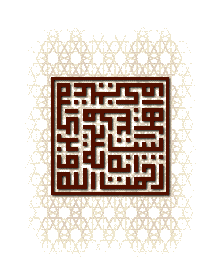 |
Introduction |
 |
Introduction |
The Hashemite royal family is interwoven into the life of Jordan, having established the modern state in 1921. It is impossible, therefore, to understand the fabric of Jordan’s modern history without some knowledge of the royal family. The Hashemites, or “Bani Hashem,” are descendants of the Arab chieftain Quraysh, a descendant of the Prophet Ismail, himself the son of the Prophet Ibrahim (Abraham). Quraysh first came to the holy city of Mecca during the second century CE. The first generation of Quraysh to rule the city came six generations later, when Qusayy bin Kilab ascended to the leadership of Mecca in the year 480 CE. The name “Hashem” is actually that of Qusayy’s grandson, who was the great-grandfather of the Prophet Muhammad (PBUH). The Hashemites are thus the direct descendants of the Prophet through his daughter Fatima and her husband Ali bin Abi Talib, who was also the Prophet’s paternal first cousin and the fourth caliph of Islam. Ali and Fatima had two sons: Al-Hassan and Al-Hussein. The direct descendants of their eldest son, Hassan, are known as “Sharifs” (nobles), while the descendants of Hussein are called “Sayyids” (lords). The royal family of Jordan, the Hashemites, is descended through the Sharifian branch of lineage. Various Sharifian families ruled over the Hijaz region in Western Arabia between 967 and 1201 CE. Moreover, King Hussein’s branch of the Hashemite family ruled the holy city of Mecca from 1201 CE until 1925 CE, although they recognized the sovereignty of the Ottoman sultan in 1517. This makes King Hussein the head of the Hashemite family which, in addition to being directly descended from the Prophet, also represents over one thousand years of rule in the area, and almost two thousand years of recorded presence in the holy city of Mecca. |
|
During his thirty-year reign, King Abdullah presided over the forging of a viable and durable state out of a tribal, nomadic society. He developed the institutional foundations of modern Jordan, establishing democratic legitimacy by promulgating Jordan’s first Organic Law in 1928 (the basis for today’s Constitution), and holding elections for its first assembly in 1929. While guiding Jordan’s development into a modern state, King Abdullah negotiated a series of treaties with Britain which earned increasing freedom for Jordan. King Abdullah achieved full independence from Britain on May 25, 1946. After successfully defending Arab East Jerusalem and the “West Bank” during the 1948 Arab-Israeli War, King Abdullah regularly traveled to al-Aqsa Mosque in Jerusalem to participate in the Friday prayers. On July 20, 1951, King Abdullah was assassinated by a lone gunman while attending the Friday prayers there with his grandson Hussein, who was saved from a bullet by a medal his grandfather had recently awarded him. After King Abdullah’s martyrdom, King Talal, his eldest son, ruled for a brief period. Due to King Talal’s illness, his eldest son, Hussein, was proclaimed King of the Hashemite Kingdom of Jordan on August 11, 1952. He assumed his constitutional powers on May 2, 1953, after reaching the age of eighteen according to the Muslim calendar. During the nine months between his coronation and the assumption of powers, King Hussein’s mother -Queen Zein al-Sharaf- played an important role in ensuring the orderly transfer of power as head of a Regency Council. Queen Zein, who remained ever popular with the people of Jordan, passed away on April 26, 1994. The passing away of His Majesty King Hussein on February 7, 1999 marks the end of an era in Jordan's history. While the country, and indeed much of the world, mourns the death of King Hussein, Jordanians look with optimism and pride to a future under the reign of King Abdullah, eldest son of the late King Hussein and current bearer of the Hashemite torch. |